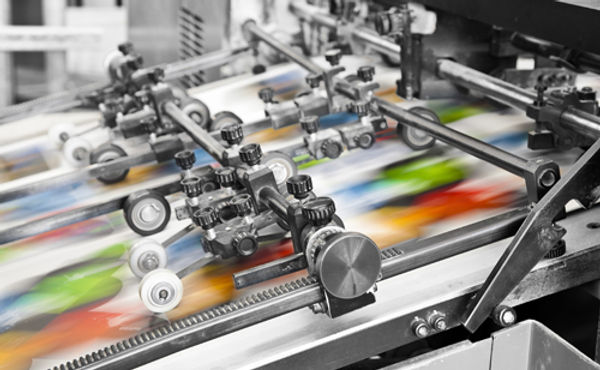Here’s What’s Happening
Media Center

June 01, 2018
The Rechargeable HEARING AIDS
Simplifying life with a simply brilliant solution
With clients becoming increasingly active, they require hearing aids that can automatically keep up with their lifestyles. Having the freedom to do and go wherever they please, without having the restrictions associated with hearing loss, is paramount.
Phonak Belong™ platform.
As the name suggests, we want clients to have hearing aids that allow them to feel at one with their environment, regardless of where they are. Your clients can rely on their hearing aids to seamlessly and automatically do all the work for them.
With Belong, consisting of rechargeable lithium-ion battery technology and the new AutoSense OS, we’ve created a simply brilliant way to simplify your clients’ lives while providing an exceptional hearing experience.
When you can enjoy 24 hours* of hearing with one simple charge, life is on
Phonak Audéo™ B-R is the first ever hearing aid to feature a specifically designed built-in lithium-ion rechargeable battery that provides 24 hours* of hearing with one simple charge! Lithium-ion batteries are quicker to charge, last longer and won’t deteriorate even after years of repeated charging. Available with easy-to-use smart charging options, clients can charge their hearing aids wherever they go, without having to worry about running out of power. Finally a chance to free our clients from the hassles of disposable batteries.

June 25, 2017
Automatic Hearing Aids
AutoSense OS and AutoSense Sky OS: the next generation of technology automation
Hearing aids with AutoSense OS recognize and automatically adapt to more of your client’s listening situations than ever before. AutoSense OS accurately captures and analyzes the sound environment, then precisely blends feature elements from multiple programs in real time to provide a seamless listening experience.

Dec 31, 2016
Top Health Tips to SAVE YOUR EARS
10 tips for safer listening
1. Use earplugs
The louder the noise and the longer you're exposed to it, the greater the chance of damaging your hearing. Protect your ears with ear protectors – earplugs or earmuffs – and get away from the noise as quickly or as often as you can. If you can't leave the venue, take regular breaks. A 10-minute rest break will give your ears some time to recover.
2. Turn down the music
Don't listen to your personal music player at very high volumes and never to drown out background noise. If the music is uncomfortable for you to listen to, or you can’t hear external sounds when you’ve got your headphones on, then it's too loud. It's also too loud if the person next to you can hear the music from your headphones.
3. Use the 60:60 rule
To enjoy music from your MP3 player safely, listen to your music at 60% of the maximum volume for no more than 60 minutes a day. All MP3 players bought within the EU have a 'smart volume' feature, so use it if you have one. It will help you regulate the volume.
4. Wear headphones
When listening to your personal music player, choose noise-cancelling headphones, or go retro with older muff-type headphones. These block out background noise and allow you to have the volume lower. Ear-bud style headphones and in-the-ear headphones are less effective at drowning out background noise. Try to take regular breaks from your headphones, though, to give your ears a rest.
5. Turn down the dial
Turn down the volume on your TV, radio or hi-fi a notch. Even a small reduction in volume can make a big difference to the risk of damage to your hearing. If you need to raise your voice to be heard above the sound, turn it down.
6. Use earplugs when you’re listening to live music
They can reduce average sound levels by between 15 and 35 decibels. They’re widely available at many live music venues and shouldn’t spoil your enjoyment of the music.
7. Don't put up with work noise
If you’re experiencing noise at work, talk to your human resources (HR) department or your manager and ask for advice on reducing the noise and getting hearing protection.
8. Wear ear protectors
Wear ear protectors (earplugs or earmuffs) if you are using noisy equipment such as power drills, saws, sanders or lawn mowers.
9. Be careful in the car
Listening to music in a confined space increases the risk of hearing damage. Don’t listen to music too loud for too long.
10. Have a hearing detox
Give your ears time to recover after they’ve been exposed to loud noise. According to Action on Hearing Loss, you need at least 16 hours of rest for your ears to recover after spending around two hours in 100dB sound, for example in a club. Reducing this recovery time increases the risk of permanent deafness.
How long can I listen to loud music for?
It depends what volume you listen at. An increase of only a few decibels has a dramatic effect on the danger to hearing. This is because each increase of 3dB represents a doubling of sound energy (and halves the time you should listen for). As an example, being on a dance floor for 15 minutes at 100dB delivers the same amount of noise energy to the ear (and therefore potential damage) as being on a slightly less noisy dance floor at 95dB for 45 minutes. A small reduction in volume makes a big difference to the length of time you should listen for.
In workplaces, staff are protected by the Control of Noise at Work Regulations 2005, which stipulate that hearing protection must be worn if the daily average noise levels reach 85dB. At 115dB the maximum daily exposure time is about 30 seconds.
But remember, the Control of Noise at Work Regulations don't apply outside the workplace, so it's up to you to safeguard your own hearing at clubs, gigs and wherever else you listen to loud music.



